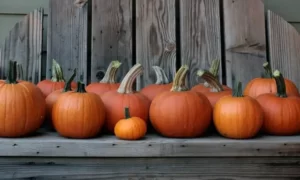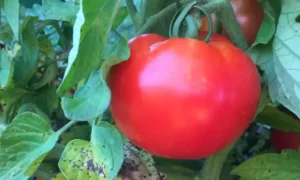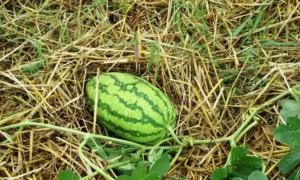If you’re planning to grow pumpkins, it’s essential to understand the concept of companion planting. Companion planting is the practice of growing two or more plants together that benefit each other in some way. In this guide, we’ll cover everything you need to know about companion planting for pumpkins.
What Is Companion Planting?
Companion planting is an ancient gardening technique that involves planting different crops together to create a more sustainable and productive garden.
The idea behind companion planting is that certain plants have natural attributes that can help other plants grow better, whether it be by attracting beneficial insects, deterring pests, or improving soil health.
What Plants to Grow With Pumpkins
When it comes to companion planting for pumpkins, several plants work well together. Here are some of the best companion plants for pumpkins:
- Marigolds: Marigolds are known to repel pests such as nematodes, which can be harmful to pumpkins.
- Nasturtiums: Nasturtiums attract aphids away from pumpkin plants, making them excellent companion plants.
- Corn: Corn can provide a natural trellis for pumpkins to climb, as well as provide shade for the soil, keeping it moist.
- Beans: Beans are nitrogen-fixing plants, which means they help to improve the soil quality for pumpkins.
Why Pumpkins Need Companions
Companion planting can help pumpkins in several ways. Firstly, companion plants can help to improve soil health by adding nutrients and organic matter to the soil.
Secondly, certain companion plants can help to attract beneficial insects that can pollinate pumpkin flowers or eat pests that might harm pumpkin plants.

Pumpkin Companion Plants
The plants mentioned above, here are some other pumpkin companion plants to consider:
- Corn: Corn is a good companion plant for pumpkins as it can help provide shade and support for the vining pumpkin plants. Additionally, the tall corn plants can help block wind and provide a windbreak for the more delicate pumpkin plants.
- Sunflowers: Sunflowers are another good companion plant for pumpkins as they can provide shade and support for the vining pumpkin plants. Additionally, sunflowers can attract beneficial insects such as bees and butterflies.
- Marigolds: Marigolds are a good companion plant for pumpkins as they can help repel pests such as nematodes and beetles. Additionally, the strong scent of marigolds can help deter rabbits and other small animals that might try to eat the pumpkin plants.
- Nasturtiums: Nasturtiums are another good companion plant for pumpkins as they can help repel pests such as aphids and squash bugs. Additionally, the leaves of nasturtiums are edible and can be used in salads.
- Lavender: Lavender is a good companion plant for pumpkins as it can help repel pests such as moths and beetles. Additionally, the strong scent of lavender can help deter rabbits and other small animals that might try to eat the pumpkin plants.
- Pole Beans: Pole beans are a good companion plant for pumpkins as they can help fix nitrogen in the soil and provide shade and support for the vining pumpkin plants. Additionally, pole beans can attract beneficial insects such as bees and butterflies.
What Not to Plant with Pumpkins
While companion planting can be beneficial for pumpkins, there are some plants that you should avoid planting near pumpkins.
Here are some bad companion plants for pumpkins:
- Potatoes: Potatoes are in the same family as pumpkins and can attract pests and diseases that can harm both plants.
- Fennel: Fennel can inhibit the growth of pumpkin plants.
- Brassicas: Brassicas, such as broccoli and cabbage, can attract pests that can harm pumpkin plants.
Pumpkin Companion Planting Chart
Here’s a quick reference guide to pumpkin companion planting:
| Companion Plant | Benefits |
|---|---|
| Marigolds | Repel pests |
| Nasturtiums | Attract beneficial insects |
| Corn | Provide a natural trellis and shad |
| Beans | Improve soil quality |
| Sunflowers | Provide shade |
| Radishes | Repel cucumber beetles |
| Borage | Attract pollinators |
Companion Plants for Watermelon
If you’re also growing watermelons, here are some companion plants that can work well with both pumpkins and watermelons:
- Radishes: Radishes are a good companion plant for watermelon as they can help repel cucumber beetles, which can also damage watermelon plants. Additionally, radishes can help loosen soil and make it easier for watermelon roots to grow.
- Oregano: Oregano is a good companion plant for watermelon as it can help repel pests such as aphids, spider mites, and cucumber beetles. Additionally, the strong scent of oregano can help deter rabbits and other small animals that might try to eat the watermelon plants.
- Strawberries: Strawberries are a good companion plant for watermelon as they can help repel pests such as slugs and snails. Additionally, the low-growing strawberry plants can help shade the soil and keep it moist, which can be beneficial for watermelon plants.
- Borage: Borage is a good companion plant for watermelon as it can attract beneficial insects such as bees and butterflies. Additionally, the leaves of borage are edible and can be used in salads.

Tomato Companion Plants
If you’re growing tomatoes alongside pumpkins, here are some companion plants that can work well together:
- Basil: This herb is a great companion plant for tomatoes as it can help repel pests such as whiteflies and spider mites. Additionally, the strong scent of basil can attract beneficial insects such as bees and butterflies.
- Marigolds: Marigolds have a strong scent that can help repel pests such as aphids and whiteflies. Additionally, the roots of marigolds produce a substance that can help repel nematodes, which are tiny worms that can harm tomato plants.
- Nasturtiums: Nasturtiums are another companion plant that can help repel aphids and whiteflies. Additionally, the leaves of nasturtiums are edible and can be used in salads.
- Borage: Borage is a great companion plant for tomatoes as it can attract beneficial insects such as bees and predatory wasps. Additionally, borage can help improve soil health by fixing nitrogen in the soil.
- Carrots: Carrots are a good companion plant for tomatoes as they can help break up compacted soil, which can improve soil drainage and aeration. Additionally, the long taproots of carrots can help bring nutrients up from deep in the soil.
- Chives: Chives are another herb that can repel pests such as aphids and thrips. Additionally, chives can attract beneficial insects such as bees and predatory wasps.
- Parsley: Parsley is a good companion plant for tomatoes as it can help repel pests such as tomato hornworms and aphids. Additionally, parsley can help improve soil health by adding organic matter to the soil.
Conclusion
Companion planting is an effective way to improve the health and productivity of your pumpkin plants. By planting certain companion plants alongside pumpkins, you can improve soil health, attract beneficial insects, and repel pests that might harm your pumpkin plants.
Be sure to avoid planting bad companion plants near pumpkins, as they can attract pests and diseases that can harm your pumpkin plants.
FAQs
Q1: Can I plant pumpkins next to zucchini?
A: Yes, zucchini can make a good companion plant for pumpkins. They have similar growing requirements and can benefit from the same companion plants.
Q2: Can you plant tomatoes and pumpkins together?
A: Yes, tomatoes and pumpkins can be planted together, but it’s important to make sure they have enough space and aren’t competing for resources.
It’s important to choose companion plants that have similar growing requirements and to avoid planting bad companion plants nearby.
Q3: What grows well near pumpkins?
A: Companion plants that grow well near pumpkins include corn, beans, sunflowers, marigolds, and nasturtiums. These plants can provide shade, support, and pest control for pumpkin plants.
It’s important to choose companion plants that have similar growing requirements and to avoid planting bad companion plants nearby.
Q4: Can you plant pumpkins next to it?
A: Pumpkins can be planted next to a variety of plants including corn, beans, sunflowers, marigolds, nasturtiums, and other plants that have similar growing requirements.
It’s important to avoid planting bad companion plants nearby as they can compete for resources and attract pests that might harm pumpkin plants.

